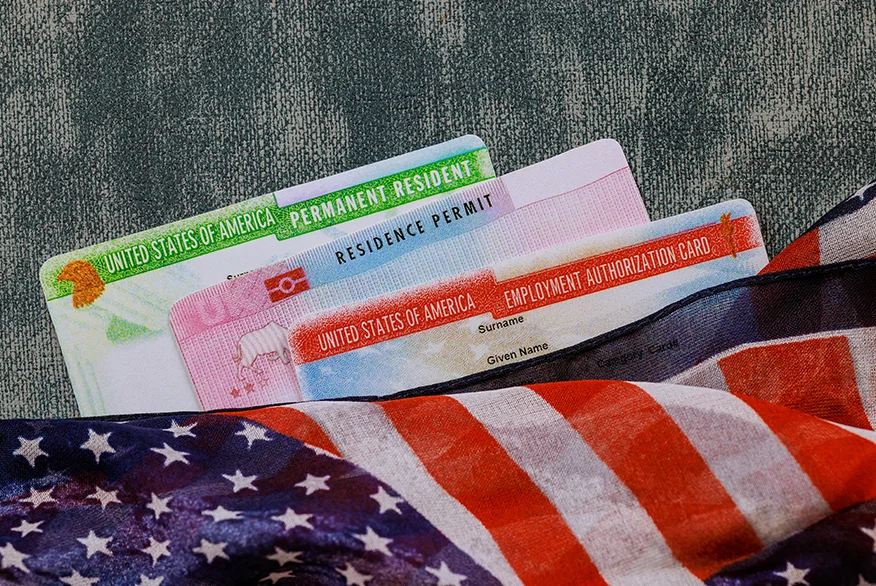Understanding the K-1 Fiancé(e) Visa
The K-1 visa allows you to bring your foreign fiancé(e) to the United States so you can get married here. Once your fiancé(e) arrives, you have 90 days to get married—this deadline cannot be extended. After marriage, your spouse can apply for a green card and stay in the United States permanently.
Important things to know:
- Only U.S. citizens can sponsor a fiancé(e) (green card holders cannot)
- Your fiancé(e)'s unmarried children under 21 can come too on K-2 visas
- The process typically takes 8-13 months from start to finish
- After marriage, your spouse will need to apply for a green card
Do You Qualify? Basic Requirements
Both you and your fiancé(e) must meet these requirements:
For the U.S. Citizen Sponsor:
- You must be a U.S. citizen (not just a green card holder)
- You must be legally free to marry (any previous marriages must be ended by divorce or death)
- You must meet minimum income requirements (at least 100% of the federal poverty level for your household size)
For Your Foreign Fiancé(e):
- Must be legally free to marry
- Must intend to marry you within 90 days of arriving in the U.S.
- Cannot have serious criminal history or immigration violations
For Both of You Together:
- You must have met in person at least once in the past two years (with very limited exceptions)
- Your relationship must be genuine—not just for immigration benefits
- You both must sincerely intend to marry each other
Proving Your Relationship:You'll need to show evidence like:
- Photos together from different times and places
- Plane tickets and hotel receipts from visits
- Messages, emails, and call records
- Statements from family and friends who know about your relationship
- Engagement announcements or wedding planning documents
The K-1 Visa Process: Step by Step
Step 1 - File the Petition (6-12 Months)
What happens: You (the U.S. citizen) file Form I-129F with U.S. Citizenship and Immigration Services (USCIS).
What you'll need:
- Completed Form I-129F
- Proof of your U.S. citizenship (passport, birth certificate, or naturalization certificate)
- Evidence of your relationship (photos, travel records, correspondence)
- Proof any previous marriages have ended (divorce decrees or death certificates)
- Two passport-style photos of each of you
- Filing fee (approximately $675)
Timeline: USCIS processing currently takes 6-12 months on average, though it can vary significantly depending on which service center handles your case.
Helpful tip: While waiting for approval, keep documenting your relationship with new photos and communication. Also start gathering documents your fiancé(e) will need later, like birth certificates and police clearances.
Step 2 - Embassy Interview (2-4 Months)
What happens: After USCIS approves your petition, it goes to the National Visa Center, then to the U.S. Embassy or Consulate in your fiancé(e)'s country.
Your fiancé(e) will need to:
- Complete the DS-160 visa application online
- Pay the visa application fee (approximately $265)
- Schedule a visa interview appointment
- Complete a medical exam with an approved doctor
- Gather all required documents
Documents needed for the interview:
- Valid passport (good for at least 6 months)
- Birth certificate with English translation
- Police clearance certificates from countries where they've lived
- Updated relationship evidence
- Financial support documents (Form I-134 from you)
- Proof previous marriages ended (if applicable)
- Medical exam results
- Two visa-style photographs
The Interview: Your fiancé(e) will meet with a consular officer who will ask questions about your relationship, such as:
- How did you meet?
- When did you get engaged?
- What does your fiancé(e) do for work?
- Where will you live after marriage?
- Have either of you been married before?
Preparation tips:
- Review your relationship timeline together beforehand
- Organize all documents neatly
- Answer honestly and confidently
- Don't memorize scripted answers—just know your story well
If approved, your fiancé(e)'s passport will be stamped with the K-1 visa within a couple of weeks.
Step 3 - Coming to America (Within 90 Days)
Entry to the U.S.:Your fiancé(e) can now travel to the United States. The 90-day countdown starts the day they arrive.
What happens next:
Within 90 days, you must:
- Get legally married (a simple courthouse wedding is fine)
- Obtain a marriage certificate
After marriage:
- Immediately file Form I-485 (Application for Green Card)
- File Form I-864 (new financial sponsorship showing 125% of poverty level)
- Apply for work authorization and travel permission
- Attend a green card interview
Important notes:
- The 90-day deadline cannot be extended for any reason
- If you don't marry within 90 days, your fiancé(e) must leave the U.S.
- Your fiancé(e) can only marry YOU on this visa—not someone else
- Most couples receive a 2-year conditional green card that becomes permanent after filing to remove conditions
Common Challenges (And How to Avoid Them)
Not Enough Relationship Proof
The problem: Many couples submit only a few photos or minimal evidence.
The solution: Document everything! Include photos from multiple visits, screenshots of conversations, travel records, and letters from people who know about your relationship. More is better.
Missing or Expired Documents
The problem: Police certificates or medical exams expire during processing delays.
The solution: Keep track of expiration dates. Police clearances are typically valid for one year; medical exams for six months. Get certified copies of important documents.
Financial Requirements
The problem: Not meeting the income threshold can delay or deny your case.
The solution: Check the current poverty guidelines for your household size. If your income is borderline, consider getting a better-paying job before filing, or carefully document your assets. Remember: it's 100% of poverty level for the K-1 visa, but 125% for the green card application after marriage.
Long Wait Times
The problem: The process takes many months with unpredictable timelines.
The solution: File as early as possible. Submit complete, accurate paperwork to avoid requests for more evidence. Check your case status online regularly and stay patient.
Interview Anxiety
The problem: Nervousness can lead to inconsistent answers that raise red flags.
The solution: Practice common interview questions with your partner. Know key dates and details. Stay honest and calm. If you don't know something, say so rather than guessing.
Not Following Instructions
The problem: Missing a document or deadline can derail your case.
The solution: Read every letter from USCIS and the embassy carefully. Follow embassy-specific instructions exactly. When in doubt, ask an immigration attorney.
Special Situations: Russia and Ukraine
Russian Fiancé(e)s
Due to diplomatic issues, the U.S. Embassy in Moscow stopped processing fiancé visas in 2021. Russian applicants are considered "homeless" and must interview at a third-country embassy.
Current situation:
- Most Russian K-1 applicants are assigned to Warsaw, Poland
- However, getting a visa to enter Poland is extremely difficult for Russians right now
- You can request transfer to embassies in other countries like Kazakhstan, Turkey, Georgia, Armenia, or Uzbekistan
- The embassy must agree to accept your case, and you must be able to legally travel there
What to do: Work with an experienced immigration attorney who can help coordinate case transfers and navigate these complex logistics.
Good news: As of late 2024, the U.S. Embassy in Kyiv has reopened and is processing K-1 visas again.
Options:
- If your fiancé(e) is safely in Ukraine, they can interview in Kyiv
- If they're displaced in Europe, they can request to interview at an embassy in their current location (like Warsaw or Frankfurt)
- Many European countries allow Ukrainians visa-free entry, making third-country interviews easier
What to consider: Security conditions in Ukraine could change. Have a backup plan and work with an attorney if you need to transfer your case.
Why Work with an Immigration Attorney?
While some couples handle K-1 visas on their own, an experienced attorney can:
Save time and stress:
- Prepare your petition correctly the first time
- Avoid delays from errors or missing documents
- Handle any problems that come up quickly
Increase your chances of success:
- Identify potential issues before they become problems
- Organize your evidence in the most compelling way
- Prepare your fiancé(e) thoroughly for the interview
Navigate complex situations:
- Embassy closures or transfers
- Prior immigration violations
- Criminal history concerns
- Unusual relationship circumstances
Provide full support:
- Guide you from petition filing through green card approval
- Attend interviews with you when allowed
- Handle all communication with USCIS and embassies
Protect your investment:
- A denied petition means starting over with new fees
- Attorney fees often cost less than the consequences of mistakes
- Peace of mind knowing professionals are handling your case
Financial Requirements Explained
For the K-1 Visa (Form I-134):
- You must show income at 100% of the federal poverty guidelines
- For a household of two (you and your fiancé(e)), this is approximately $20,000-$21,000 per year in 2025
- Provide recent tax returns, pay stubs, and employment letter
After Marriage (Form I-864):
- You must show income at 125% of the poverty guidelines
- For a household of two, this is approximately $25,000-$26,000 per year
- This is a legally binding contract until your spouse becomes a citizen or works for 40 quarters
If your income is too low:
- Joint sponsors are NOT allowed for K-1 visas (only assets can supplement)
- For the green card after marriage, you CAN have a joint sponsor
- Document any assets like savings accounts or property
Timeline and Costs Overview
Typical Timeline:
- USCIS processing: 6-12 months
- Embassy processing: 2-4 months
- Total: 8-13 months on average
Government Fees:
- Form I-129F filing fee: ~$675
- K-1 visa application fee: ~$265
- Medical exam: $200-$500 (varies by country)
- After marriage (I-485 green card): ~$1,760
- Total government fees: approximately $2,760-$3,060
Other Costs to Consider:
- Travel for visits and interviews
- Document translations and certifications
- Police clearance certificates
- Attorney fees (if you hire one)
Ready to Begin?
The K-1 fiancé(e) visa process is complex, but thousands of couples successfully reunite in the United States every year. With careful preparation, thorough documentation, and possibly professional guidance, you can bring your love story to America.
Next steps:
- Make sure you meet all eligibility requirements
- Start gathering evidence of your relationship
- Consider scheduling a consultation with an immigration attorney
- Prepare financially for the government fees and process costs
- Stay organized and patient throughout the journey
Your future together in the United States is worth the effort. Don't let incomplete paperwork or avoidable mistakes delay your reunion—get expert help if you need it, and approach each step carefully.
Contact SG Legal Group today to schedule your consultation and start your journey to marriage in America.






